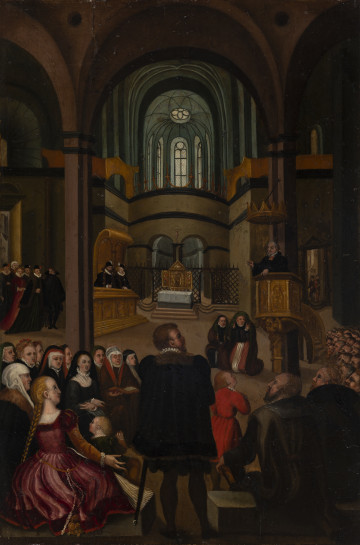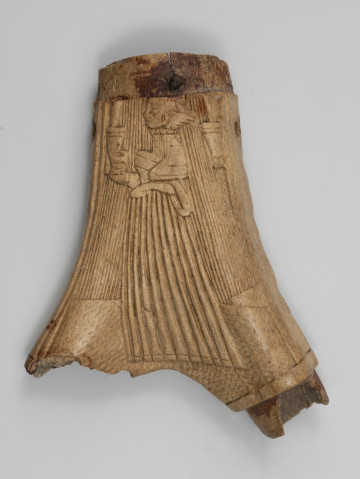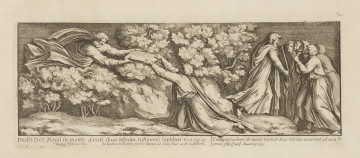
Kazanie w kościele ewangelickim | Sermon in a Protestant church
3. ćwierć XVI wieku
National Museum in Szczecin
Part of the collection: Genre scenes (19th–1st half of the 20th c.)
A scene from Trylogia [Trilogy] is an example of the artists' interest in Henryk Sienkiewicz's work. Made by Władysław Barwicki, the composition is a copy of a painting by Piotr Stachiewicz. Trylogia has inspired artists since the first episodes were published in 1883 in the Warsaw "Słowo" and the Krakow "Czas" newspapers. The earliest "illustrations" were made by well-known and popular artists: Juliusz Kossak, Stanisław Batowski and Piotr Stachiewicz. Their painterly visions found recognition among the general public and expert circles. The images created by those painters, depicting episodes and characters from the Trylogia or Quo Vadis, functioned for a long time as models, even ready-made clichés, which were used by other artists, directors and producers of souvenirs. Realistic representations, saturated with care for fidelity to the era, were generally believed to contain the spirit of Sienkiewicz's prose, respond to patriotic moods, and evoke nostalgia for the colourful Old Polish culture receding into the past.
Barwicki was a poet, painter, sculptor and social activist. Apart from the Warsaw period of his studies (with Wojciech Gerson), he lived and worked in Lublin. The artist was active in the cultural development of the city. In 1924, he founded an art school together with Krystyn Wiercieński. For years he taught drawing at Ludwika Mehoffer's Free School of Painting and Drawing, attended by Hanna Rudzka-Cybis.
Barwicki was involved in mural painting. His polychromies can be found in the interiors of Lublin monasteries and churches in the Lublin region. He made painting decorations for theatres, well-known confectioneries and restaurants. In 1915, he published a collection of poems entitled Lublin w pieśni [Lublin in Song], a kind of a rhymed guide to the monuments. The text was interwoven with legends and tales (for example, about the Devil's court) and descriptions of customs and rituals (the Corpus Christi procession, the bugle call from the Krakow Gate). The author included his own illustrations: personifications of the Bystrzyca River, Sąd Trybunalski [The Tribunal Court], Sen Leszka Czarnego [Dream of Leszek the Black].
The artist's legacy is dominated by portrait, religious and historical painting. In his works, he often reached for symbolism and allegory. He used various techniques. Barwicki's works "had a refined sense of line, and in colour, they created harmony and strength". ("Głos Lubelski" 1933, no. 4).
Bożena Kasperowicz
Author / creator
Dimensions
cały obiekt: height: 74,7 cm, width: 48 cm
Object type
watercolor
Technique
gouache
Material
paper
Creation time / dating
Creation / finding place
Owner
The National Museum in Lublin
Identification number
Location / status

3. ćwierć XVI wieku
National Museum in Szczecin

1501 — 1600
National Museum in Szczecin

1650 — 1670
National Museum in Szczecin
DISCOVER this TOPIC
Museum of King Jan III's Palace at Wilanów
DISCOVER this PATH
Educational path